Intel NUC 11 Compute Element Performance
Instead of going through the entire Linux-Bench test suite, we are going to show a few performance and power numbers here to give a general sense of performance. We actually planned to do storage testing, but then we realized that there was a huge variability in terms of what drives could be found in machines.
Python Linux 4.4.2 Kernel Compile Benchmark
This is one of the most requested benchmarks for STH over the past few years. The task was simple, we have a standard configuration file, the Linux 4.4.2 kernel from kernel.org, and make the standard auto-generated configuration utilizing every thread in the system. We are expressing results in terms of compiles per hour to make the results easier to read:
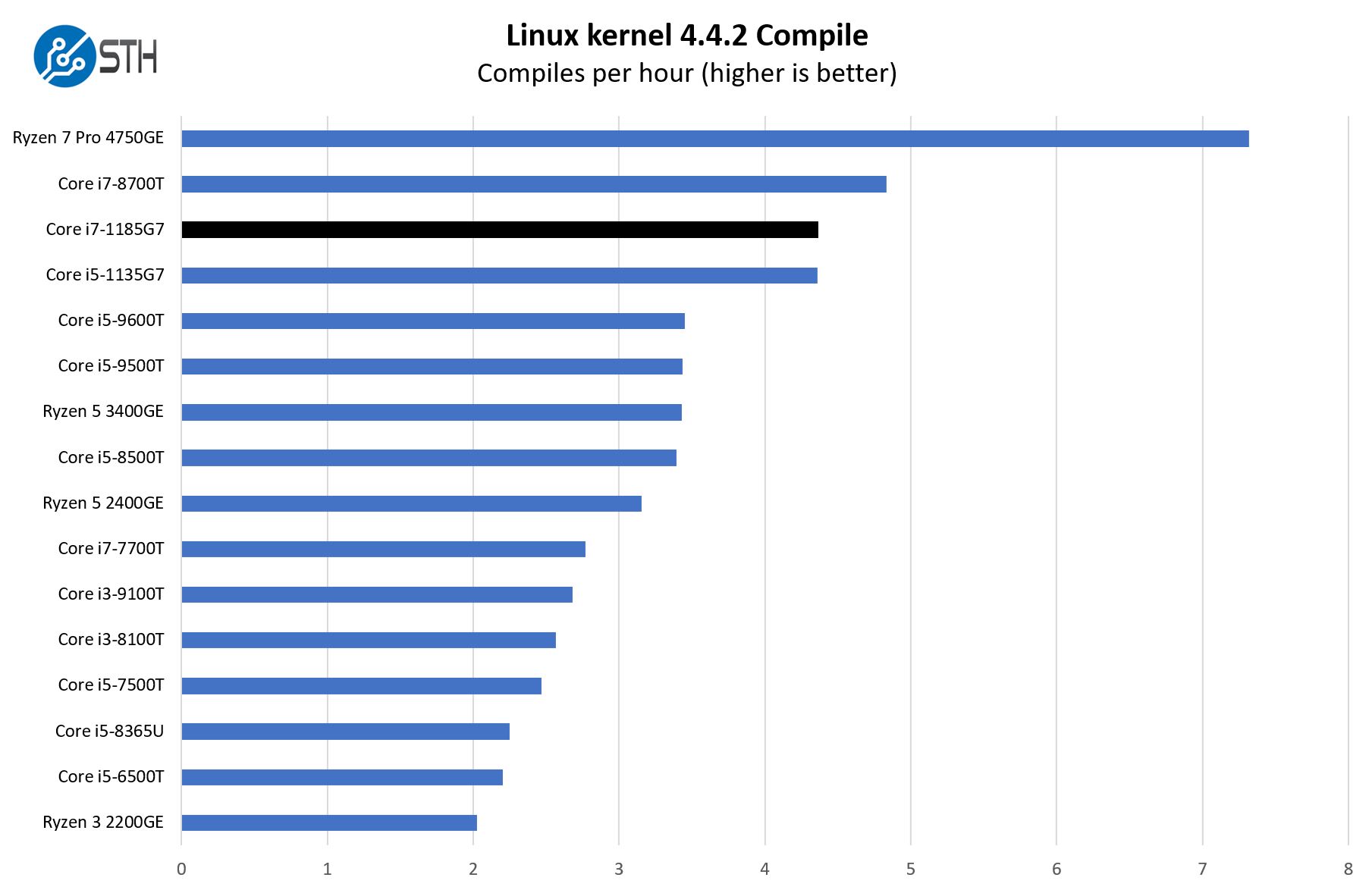
Here, we get good performance for a 4C/ 8T unit. It is largely in line with some of the 35W Core i5 solutions of generations earlier yet with a 28W TDP limit.
7-zip Compression Performance
7-zip is a widely used compression/ decompression program that works cross-platform. We started using the program during our early days with Windows testing. It is now part of Linux-Bench.
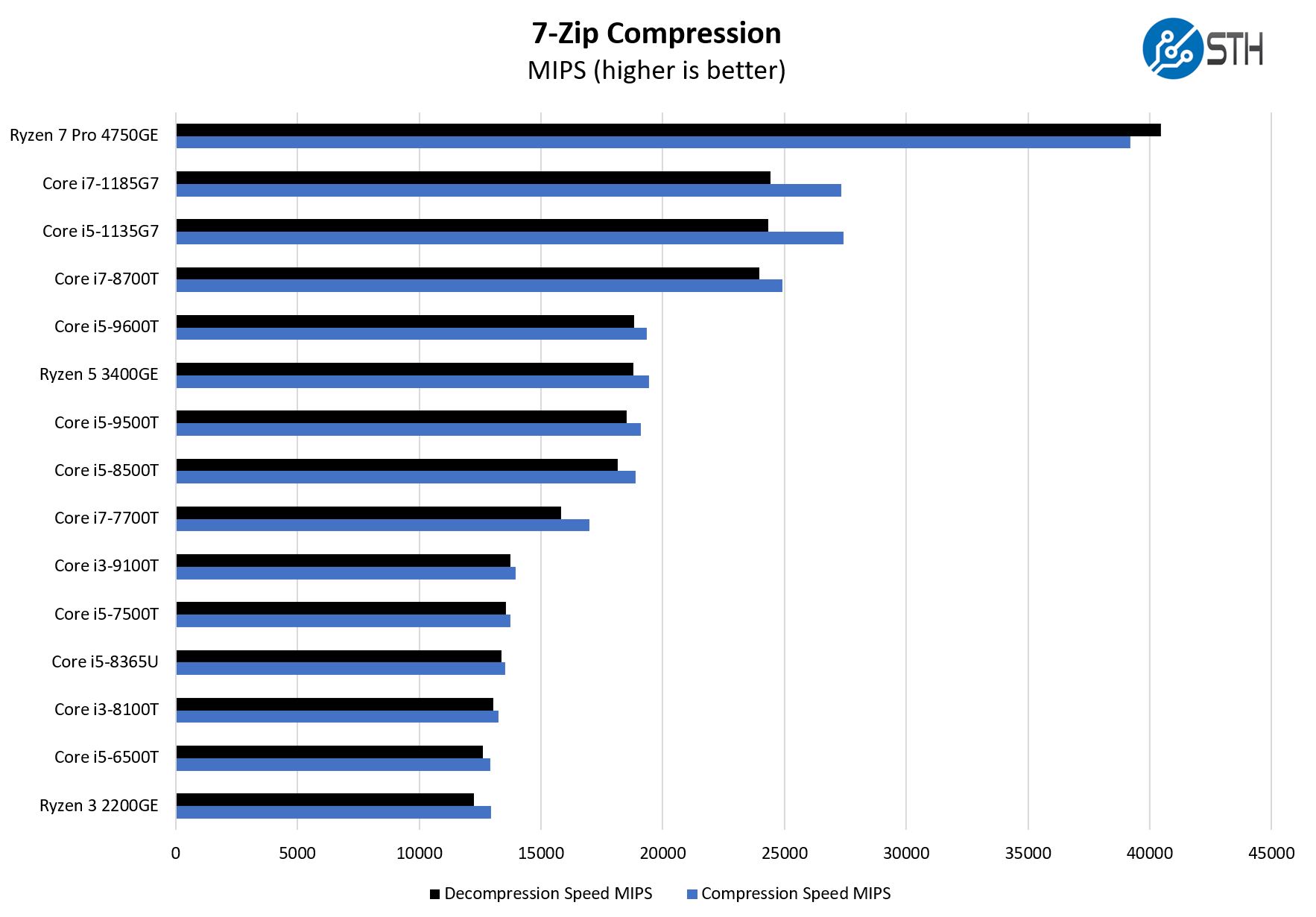
Something that one will notice here is that the Core i7-1185G7 and the Core i5-1135G7 are very close in terms of performance. Indeed, on other benchmarks, we saw the Core i5 slightly ahead, but we have a small set we use for rough Project TinyMiniMicro sizing.
OpenSSL Performance
OpenSSL is widely used to secure communications between servers. This is an important protocol in many server stacks. We first look at our sign tests:
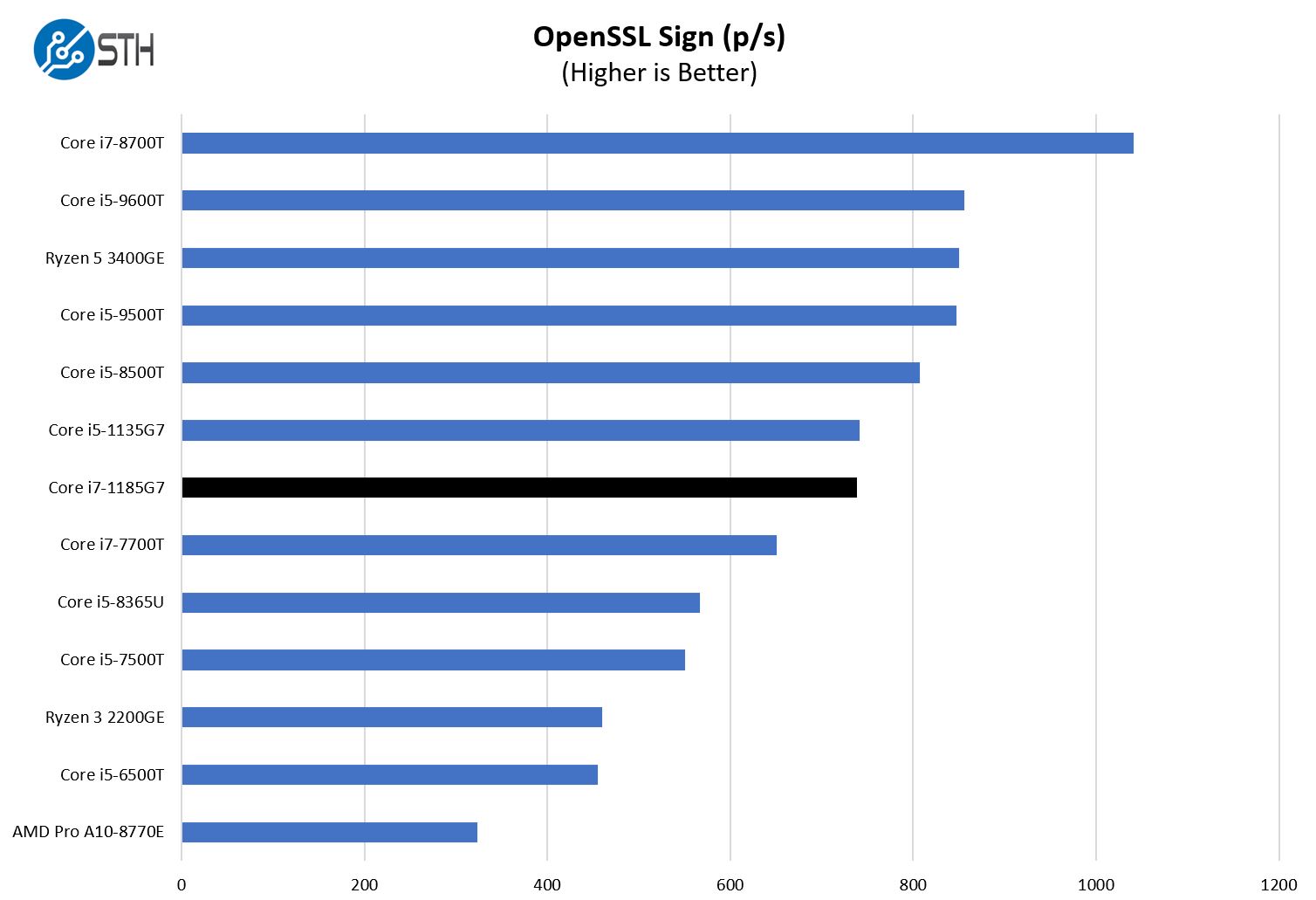
Here are the verify results:
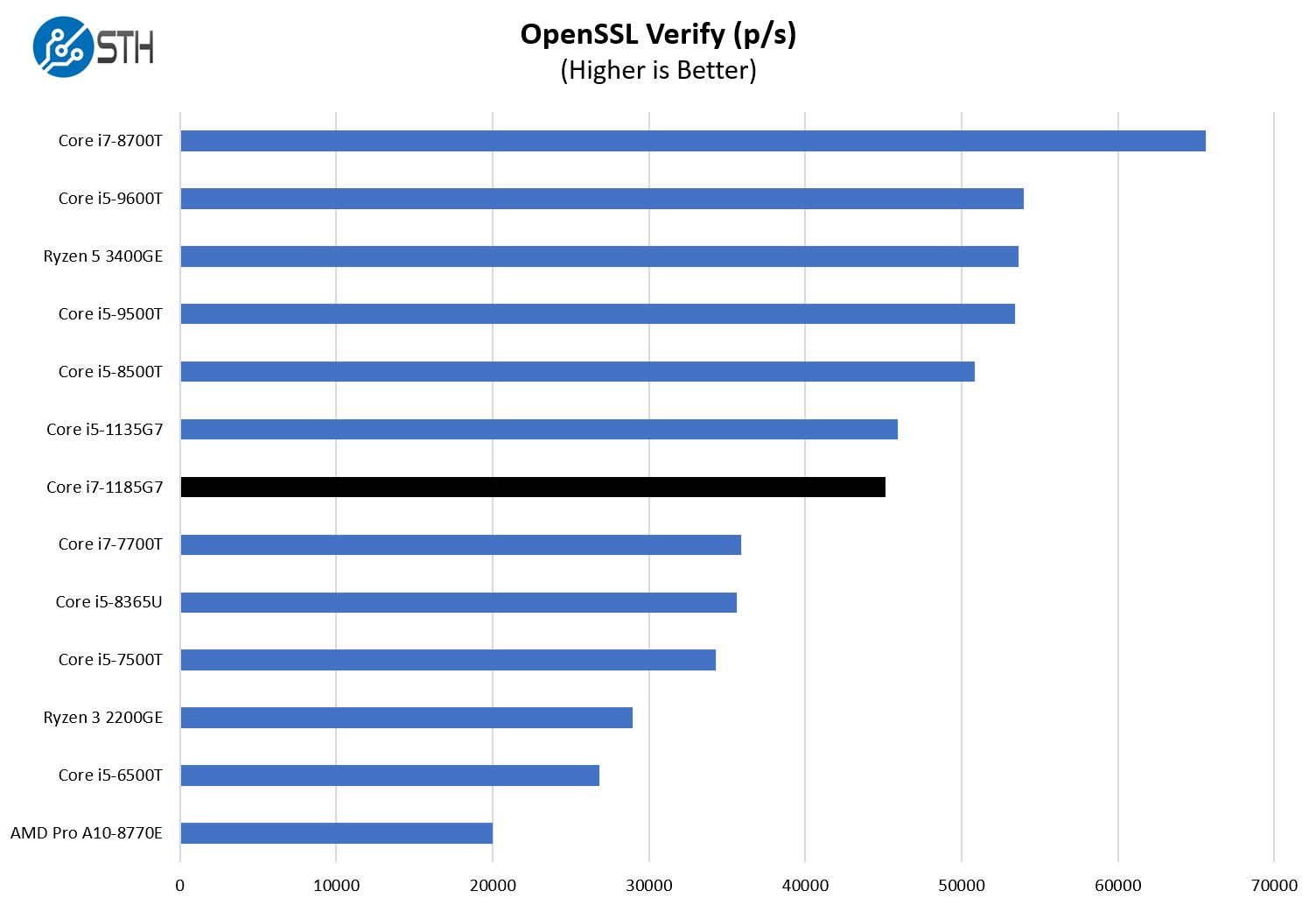
Overall, these are great results, but the delta between the Core i5 and this Core i7 versions are very small. We were a bit surprised by this especially given the 8MB of cache for the Core i5-1135G7 and the 12MB for the Core i7-1185G7. Still, it was very consistent across our entire test suite where thermal/ power limits kept CPU performance relatively close. Perhaps the bigger difference is in the features where we get 96 v. 80 Intel Xe graphics execution units.
A Word on Intel Iris Xe Graphics
Something that I struggle with is integrated graphics. Make no mistake, the Intel Iris Xe graphics have Intel’s updated Quick Sync and other features which make it a definite upgrade. For those who just want a great desktop experience or something to use for transcoding video, the Iris Xe is a big upgrade, and one can tell Intel is putting a lot of effort into GPUs.
At the same time, we often get questions about playing games. There is still a fairly large gap between this and PCIe GPUs. Even non-resource intensive games like Counter-Strike: Global Offensive at 1080p was “playable” if one turns down settings. With that said, playable on an older eSports title probably means your play experience is effectively that you are there to be fodder for players who have more traditional gaming setups.

For games that look more like they are Bloons TD, Candy Crush, Monopoly, Among Us, Angry Birds, and such, the NUC 11 Pro is serviceable. For higher-end more graphically intensive or reaction-time-based games, this is not going to replace a traditional gaming PC.
The experience was slightly better than on the NUC 11 Pro, but it was still effectively “unplayable” if you are trying to have a good experience.
Next, we are going to take a look at the Intel NUC 11 Compute Element power consumption and noise.

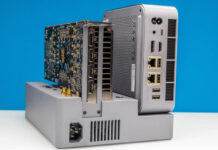


So this next unit of computing – an atom, if you will – is, in fact, composed of a limited number of smaller, exotic particles which are expensive to obtain, can’t be easily reused, and are likely to decay in value quickly? Sounds familiar…
I got NUC8/10/11 each with the “near top” i7 variants and top iGPUs available (48/24/96 EUs respectively). To me it boiled down to the NUC8/10 being next to identical on single-thread performance and the NUC10/11 being next to identical on multi-thread performance (but 6 vs 4 cores to get there).
I am very surprised to see that the highest bin of the Tiger Lake i7 with LDDR4 doesn’t show any difference to the i5 with ordinary DDR4: could you run a synthetic RAM bandwidth benchmark on both?
I guess most of your benchmarks are simply too lengthy for the i7 to show off its sprinting ability, but have it run against the TDP limits, which may not be so different for the distinct bins.
OpenSSL and ZIP may just fully fit into the smaller i5 cache, while a kernel compile may be mostly dirty (source code) data and cached (compiler) code, with all FP sections of the CPU snoozing and mostly the jump prediction and load/store units doing overtime. I’d hazard that compiles are pretty much (RAM) I/O bound after they’ve consumed the logic/integer parts of a modern CPU these days.
@GreenReaper: You’re right, but most likely so is Intel in this case. NUC fit in to niches pretty much by definition and here they have identified a niche outside the datacenter and big enough to fit a million or a couple, where they can both get more than the CPU slice of the pie and outscale a couple of OEMs for a product that is likely to see high mass surveillance demand.
The real issue with these compute elements is that Intel introduces them, then the so called standard dies in a generation or two.
Hello, I was wondering if the case comes with pre-drilled VESA holes, or a VESA mount.
Thank you.
The intel spec for the 11 series nuc compute element says it has thunderbolt, however can not find case that will allow this feature to be utilised,